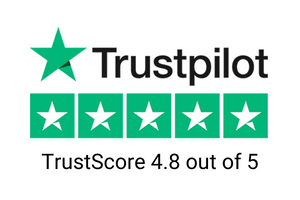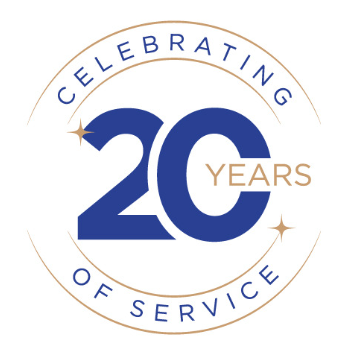Last Updated: December 04, 2023
Comfortable Retirement?

The average retirement age nowadays is around 63-64 years old. What does that mean for your finances? How much will you need to save for a comfortable retirement, and how do you know when the time comes?
This article is going to give you some concrete numbers so that you can figure out what's in store for your future.
The cost of retirement is different for everyone,
The cost of your retirement really depends on a number of factors, like your home equity, how much you've invested in the stock market or other investments, what your living expenses are going to be until retirement age.
For some people, they can retire comfortably with just Social Security benefits alone (less than $24k/year).
If you have saved more for retirement during your working years and then supplemented your income through your savings while retired, you may need around $60-70k/a year.
It all really comes down to how many decades you want to spend as retirees - those who plan on spending 20+ years will need higher incomes. Those willing to dial back their lifestyle by spending less now but enjoying themselves later only require a fraction of that.
The average retiree spends $36,000/year on retirement expenses while the median is around $25,500.
Factors to consider when estimating your retirement costs
There are many factors to consider when estimating your retirement costs. The length of your retirement, whether you are single or married, and how expensive the area is where you live all affect how much money you need to retire.
Other factors you should consider when estimating your retirement costs include the cost of living, dependents, income, and expenses.
Some considerations are more significant than others but they all should be taken into account if possible. Income is a factor that should be considered as it can have an effect on one's monthly expenses such as housing and utilities.
Other factors such as Social Security income may also come into play in the calculation based on other factors being determined. The nature of your plan or company pension plans will need to be discussed in conjunction with their restrictions and benefits provided for example whether they are taxed or not, how long you contribute before collecting pension benefits after retirement age etc.
How much money do you need to retire comfortably?

Let's be honest, we are all wondering how much money we really need in order to retire comfortably.
In the US many people will tell you that $100,000 is enough to retire on. However, that number might be increasing substantially in the future due to rising home prices and inflation.
In other countries, this number may be much higher or lower based on living expenses and cost of living.
In Argentina for example an average person only needs about $15,000 USD a year in order to live comfortably even with few luxuries.
When is the right time to start saving for retirement?
The other big question you are probably wondering is when is the right time to retire. The answer is that there isn't a right time. Depending on your financial situation and the amount of money you have saved, it might not make sense to retire if you are only just getting started in retirement savings or invested.
However, once you reach an age where social security benefits kick in (or other means), it may be worth retiring earlier than traditionally expected as these benefits will help cover some of your costs going forward.
In general, though, working until the end of one's career is considered more respectable so don't feel like this decision should be made lightly even with all these factors taken into account - we also need to consider our mental well-being!
What are your options for retirement savings accounts
Individual Retirement accounts are the most common method of retirement savings in America. An IRA such as a Traditional or Roth IRA can offer significant benefits including tax-deferred growth, federal income tax deduction on contributions made to the account, and capital gains on investments that remain income-tax free.
Other options like 401(k)s and Health Savings Accounts (HSAs) also provide advantages for retirement savers. Our guide on how to save for retirement covers the pros and cons of various account types in more detail.
The following are typical benefits that cause people to choose an individual retirement account (IRA): Intuitiveness - IRAs are very intuitive for many Americans because it is so much easier to invest your money into one place than it is trying to keep track of multiple savings accounts.
Bankruptcy Protection - IRAs maintain their protection from bankruptcy filings, even during financial hardship situations like restraining orders or foreclosure while any other assets are not protected.
What should I be doing now to prepare myself financially for my future self
Save as much money as possible before retiring, but don't put off saving because you want to enjoy yourself now!
The more you save, the less money you will need to withdraw out of your retirement account. One way to help convince yourself that saving is important and necessary is by knowing how much it costs throughout your lifetime.
There are many different factors that can affect how much one needs for retirement including education background (college vs high school), occupation type (skilled labor or professional/managerial work) as well as a geographical location both in the US and abroad.
For some people living in countries like Japan with a lower cost of living than the United States, they may not need nearly as much saved up because their expenses would be far cheaper on average than an American who lives at home.
While saving is crucial, you also want to avoid going into retirement with excessive debt. Learn more in our comprehensive debt payoff guide on strategies to become debt-free before your golden years. This will put you in a better financial position when you do leave the workforce.
And remember, your retirement savings should take priority over other goals like college savings accounts. See our article about using retirement money for college to understand the tradeoffs. Learn more by reading How Much Should You Have in Your Retirement?
Get out of debt before you retire
You might hear this often but make sure you do everything you can to try to get out of debt before you retire.
If you are carrying a lot of debt on credit cards, your monthly payments will be the same or higher than what they were while working.
Rather focus on paying off any debts before retiring so that if something happens to one's health and can't work for an extended period of time, at least they won't have their finances as burdensome.
Learn more by reading How Katherine in Michigan Retired Debt Free
Calculating Your Retirement Savings Goals
To determine how much you'll need saved for retirement, first calculate your estimated annual retirement expenses. Be sure to account for basic living costs, healthcare, travel, and desired lifestyle.
As a general rule of thumb, you should aim to have 10-15 times your final salary saved by retirement age. But a more personalized target can be calculated using free online retirement calculators.
For example, a calculator may estimate you need $2 million saved if you want $80,000 of annual income in retirement. The power of compound growth means starting retirement savings early can significantly impact your ability to reach target balances.
Leveraging Retirement Accounts
Individual Retirement Accounts (IRAs) are common savings vehicles, but other accounts like 401ks, Health Savings Accounts (HSAs), and more also offer tax advantages for retirement.
401k plans have higher contribution limits than IRAs, plus many employers match contributions up to a certain percentage. This essentially gives you free money towards retirement. Be sure to contribute enough to maximize any employer match.
HSAs can also be invested and used to fund healthcare costs tax-free in retirement. Explore utilizing multiple account types to optimize growth potential and tax efficiency. Consolidate accounts over time to simplify management.
Reducing Costs in Retirement
Living expenses are often lower for retirees, but proactively reducing costs can extend savings even further. Relocating to tax-friendly states or countries can provide exemptions and deductions. Downsizing real estate and reducing discretionary spend also limits housing and lifestyle costs over time.
Carefully manage healthcare and insurance premiums as well. Enroll in the most cost-effective Medicare parts and plans. Schedule annual checkups, fitness regimens, and preventative care to mitigate future expenses.
FAQs
Conclusion
With a little planning, you can have the retirement of your dreams. Whether it's an exotic vacation or one last adventure with friends and family, now is the time to start working on that bucket list before life becomes too busy for anything else.
We hope this post has helped you understand the financial considerations that go into retirement planning. The amount of money people need in order to retire comfortably varies dramatically depending on their age, lifestyle, and where they live.
Contact us for more information on becoming debt-free before retirement!
Reduce Your Credit Card Debt By Up to Half

BBB Reviews | 4.9/5.0 Rating









 Do Not Sell My Personal Information
Do Not Sell My Personal Information